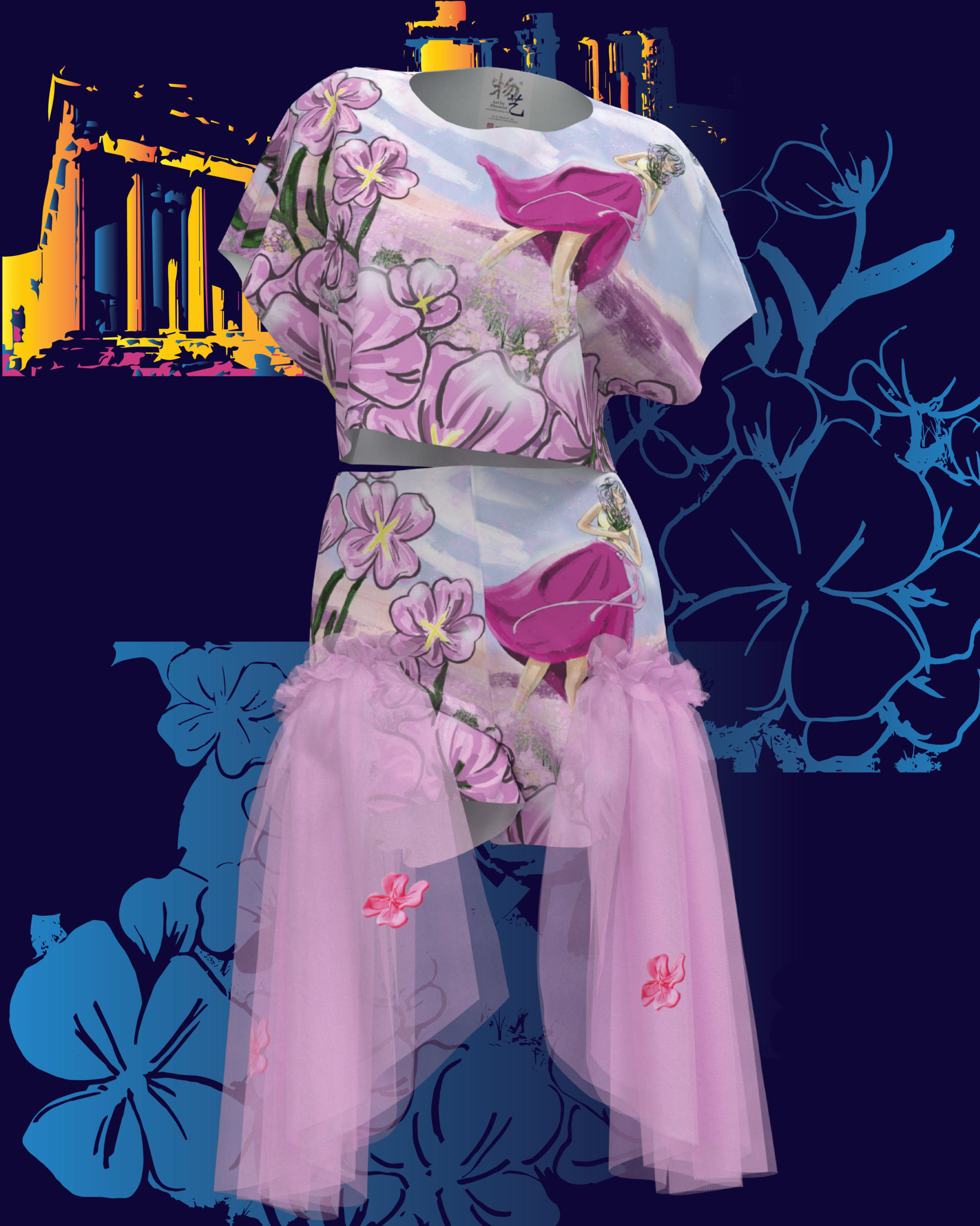Textile printing — the application of colored patterns to fabric — is not a new phenomenon. Woodblock-printed fabric dates back hundreds, perhaps thousands of years, and has been widely available in forms such as chintz and calico since before the Industrial Revolution. New printing techniques developed during that period, however, brought elaborately decorated fabrics to the hands — and bodies — of the masses.

But not everyone wants to look like the masses. Modern direct-to-fabric printers can produce ultra-short runs of custom, colorfast, washable designs on a variety of fabrics, and websites such as Spoonflower (Figure A
Sharing the Means of Production

Although digital textile printing has been around for decades, it was the internet that finally democratized the process, availing to individual designers and crafters a methodology that was once the province of large factories and design houses. After websites for creating custom T-shirts, mugs, and calendars appeared, the trend spread into more specialized areas, such as 3D printing services, printed circuit board fabrication, and custom fabric production. Just as you might create a keepsake for a friend by uploading a photo to Shutterfly, you can now upload your original design to Spoonflower for printing, or Wovns for weaving, and receive your custom fabrics in just a few weeks.
Wardrobe by Physicist

Dr. Kitty Yeung (Figure 




Digital Diligence

Yeung uses ordinary digital design tools like Photoshop and Illustrator to create her graphics. One unique concern with fabric, as compared to printing a logo on a T-shirt, is the need for designs to repeat seamlessly across the material. This is easily accomplished using Photoshop, and Yeung has gone further and taken her entire process digital, using Browzwear VStitcher (Figure C
Not All Roses
Custom printing fabric is not without its challenges. You’re limited to fixed sizes based on the capability of the machines, and to single-sided color with a white back. Depending on the application, this can be overcome by using two layers, but you’ll still want off-the-shelf fabrics for linings and interfacing. Overall, the technique is perhaps best suited to one-offs and prototypes. Mass-produced fabrics are still cheaper and more immediate to source, and there’s no risk of the pattern ending up 10 times bigger or smaller than expected because you made a mistake while ordering.
It can also be scary, given the amount of design theft in the fashion industry, to send your original designs off to an anonymous factory, so it’s important to choose a reputable company that you can trust. Some sites even let you share your original designs in their marketplace and earn commission from their sale. It is important to note too, that you may only print artwork that you have rights to or permissions to use — you can’t just borrow someone else’s design or logo or face to create your own knockoffs.
Coding the Seeds

Creative technologist bleeptrack uses custom fabric printing to manifest her generative coding projects in the physical world. Her Overflower project — an ingenious portmanteau of the computer science term overflow and the horticultural term flower — uses procedurally generative JavaScript to literally sow the seeds of imaginary flowers, based on nature’s own Fibonacci spiral (Figures D


These fictional florae were scripted to create a full Overflower “bed” — blooming to fill the available area afforded by the digital printer. Shuffling through a palette of several colors, or even progressing through the full spectrum across the length of the print, bleeptrack creates entirely unique pieces of fabric with no repetition or duplication. She then uses the material — also from Spoonflower — to hand-sew pouches, backpacks, even a winter coat. The full spectrum progression even stood (hung?) on its own as art in an exhibition (Figures 



Sonic Weave
Firmware engineer, choreographer, and podcaster Jen Costillo’s fabrics transform the sounds that are all around us into the visual spectrum. Costillo (they/them) first experimented with wearables and LEDs, imbuing dance costumes with electronics to create multimedia performances. Using the free Processing environment’s digital signal processing (DSP) capabilities, Costillo made a spectral analysis of Yma Sumac’s “Malambo No. 1,” then made it tangible using the Wovns custom woven fabric service (Figure H

Collaborating with Kyle Chan for their next piece, Costillo envisioned a modern friendship bracelet of sorts, transforming four songs that were special to their group, entwining memories into “cybergoth” cloth. Again using Processing to transform frequencies, this time radially, the result became “Industrial Plaid”(Figure 

Computational Textiles
Costillo credits the extensive tutorials on the Wovns site as having helped spur their creative use of the service — in particular, “Designing Computational Textiles with Processing.” Unlike printed fabric, woven textiles are limited to specific palettes, since the colors make up the warp and weft of the material itself, versus being applied on top. Costillo plans on using the fabrics for tote bags, and possibly skirts or dresses. Although the process is more complicated and expensive than printing, Costillo recommends woven fabric as a great next step, claiming it to be “way easier than you think!”
Build a Faster Fabric
Textile printing has come full circle — from a completely handmade process, to mass production, and back to highly personalized individual pieces — thanks to digital technology. The ability to create a unique design, click a button, and have it arrive a few weeks later as durable, colorfast fabric which can then be turned into anything, is a real game changer for designers and makers. As with so many other creative and technical pursuits, fashion tools and methodologies are evolving at an explosive rate, enabling unprecedented creativity and inventiveness, as the gap narrows between production and the speed of inspiration.
- Subscribe to be notified when the Meow line is available here
- Generate your own unique Overflower
- Listen to Jen Costillo’s reverse engineering podcast







